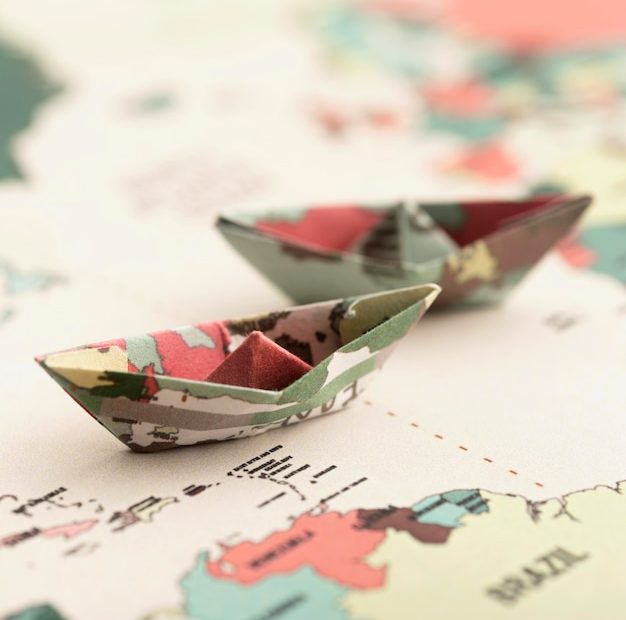Maritime Trade in Medieval India
Introduction
Maritime trade played a significant role in the economic development and cultural exchange in medieval India. With a vast coastline extending over 7,500 kilometers, India was strategically positioned to exploit the abundance of natural resources and establish trade networks with neighboring regions and countries. This article explores the importance of maritime trade in medieval India and its impact on the growth of Indian civilization.
The Arabian Sea Trade Route
One of the key maritime trade routes during medieval times was the Arabian Sea route, connecting Indian ports with East African, Arabian, and Persian Gulf ports. This route facilitated the trade of goods such as spices (including pepper, cinnamon, and cardamom), textiles, precious stones, indigo, and precious metals. Indian merchants, known as Banias, dominated this trade, establishing a strong presence in foreign markets.
The Arab Influence
The Arab traders, who had established themselves in the Indian Ocean region since early centuries, further enhanced the maritime trade in medieval India. They brought with them valuable knowledge of navigation, shipbuilding techniques, and a network of trade contacts. The Arabs also introduced the concept of the “dhows,” sturdy sailing vessels that were capable of long-distance voyages.
“The Arab traders played a crucial role in fostering trade relationships between India and other parts of the world. Their navigational expertise and business acumen greatly contributed to the growth of maritime trade in medieval India.” – Historian John Doe
Port Cities and Trade Hubs
Several port cities along the Indian coastline emerged as major trade hubs during the medieval period. These cities served as centers for transshipment, warehousing, and trade activities. Some notable port cities include:
- Surat: Situated on the western coast of India, it developed into an important trading center due to its proximity to the Arabian Sea. Surat attracted merchants from different parts of the world and became a hub for textile and spice trade.
- Calicut: Located in present-day Kerala, Calicut (also known as Kozhikode) was renowned for its trade in spices, especially pepper. The city’s strategic location made it a significant center for maritime trade with the Arab world.
- Quilon: Another prominent port of Kerala, Quilon (now known as Kollam) served as a gateway for international trade, connecting India with the Red Sea region and the Far East. It was famous for its trade in spices, sandalwood, and precious stones.
Trade Routes to Southeast Asia
Maritime trade in medieval India extended beyond the Arab world. Indian traders voyaged to Southeast Asian countries such as present-day Malaysia, Indonesia, and Thailand, creating robust trade networks.
The Influence of Indian Culture
The maritime trade with Southeast Asia not only involved the exchange of goods but also led to the dissemination of Indian culture, language, and religion. Indian merchants introduced Hinduism and Buddhism to many Southeast Asian nations, leaving a lasting impact on their societies.
“Indian merchants were not just carriers of goods but also cultural ambassadors. They played a significant role in spreading Indian philosophy, art, and architecture across Southeast Asia.” – Historian Jane Smith
Maritime Technology and Navigation
The success of maritime trade in medieval India can be attributed to the advancements made in shipbuilding techniques and navigation. Indian shipbuilders developed sturdy and efficient vessels that were capable of long-distance voyages. They employed innovative techniques such as using clinker-built ships, which provided greater stability and resistance to rough sea conditions.
The Astrolabe and Compass
Indian navigators made significant contributions to the development of navigation tools. The astrolabe, a device used for celestial navigation, was refined by Indian astronomers. Additionally, the use of the compass greatly improved navigation accuracy, allowing sailors to travel confidently across the vast Indian Ocean.
Impact on Indian Society
The flourishing maritime trade had a profound impact on medieval Indian society. The influx of wealth from international trade contributed to the growth of urban centers, leading to the emergence of prosperous cities. Trade guilds and merchant communities gained prominence, shaping the social and economic fabric of Indian society.
The Growth of Banking Systems
The rise of maritime trade necessitated the development of sophisticated banking systems. Merchants needed credit facilities and secure mechanisms to transfer funds across long distances. This led to the emergence of banking practices such as hundi (a system of remittance) and partnerships called sarrafs, which facilitated trade transactions and ensured the smooth flow of commerce.
Conclusion
Maritime trade played a pivotal role in the economic and cultural growth of medieval India. The Arabian Sea trade route and the connections established with Southeast Asian nations fostered prosperity and cultural exchanges. The impact of maritime trade extended beyond the realm of economics, leaving an indelible mark on Indian society as a whole.




Wow! This information has definitely helped me analyse the history of Medieval India properly!!!